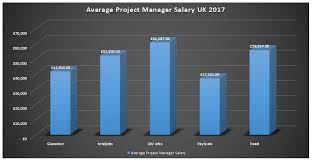Order fulfillment has to do with the placing and receiving of orders by the customers of a business organization. There are four main processes of order fulfillment; they are receiving, picking, packing, and shipping.
What Is the Meaning of Order Fulfillment?
Order fulfillment can be defined as a process whereby a business organization receives an order from its customers and finally delivers it to the customer. This whole procedure is called order fulfillment.
It can also be seen as the steps which a business organization takes between placing and receiving orders for the satisfaction of their customers.
What Are the Processes of Order Fulfillment?
In order for a business organization to carry out order fulfillment, there are steps they have to follow. The following are some steps;
- Receiving
- Picking
- Packing
- Shipping
STEP 1: Receiving
In order fulfillment, receiving is referred to as the acceptance and storage of incoming inventory at a fulfillment center. Once a 3PL receives your inventory, the products would be stored in a dedicated warehouse, for the storage location, such as shelves, vents, or palettes.
STEP 2: Picking
The main process of order fulfillment starts with picking. In an order fulfillment system, it is automatically assigned to a designated picker. They usually receive a packing slip with the products or items, quantities, and storage locations in order for them to collect the ordered products from the location respectively.
STEP 3: Packing
This is the third process of order fulfillment. After the selection has been made, your 3PL will select some packing materials that will ensure the protection of your products. It also adds up to the lowest and most practical dimensional weight.
Some of these packing materials, which are selected by your 3PL can consist of poly bags or bubble mailers, bubble wrap, air-fill, boxes, and other types of dunnage. If as a business owner, you like your brand to show on all products that are being delivered, sometimes your own 3PLs may allow you to customize your own boxes.
STEP 4: Shipping
The final step of order fulfillment is shipping. Once the orders of your customers are appropriately packed, it is time for shipping. Most of the time, your 3PLs will make purchases of shipping labels from shipping carriers on behalf of the merchants.
One major benefit of outsourcing order fulfillment is that major carriers pick up orders directly from the 3PL fulfillment center. Once the order is shipped, you will be able to receive tracking information which you can share with your customers.
If you are perhaps thinking about outsourcing order fulfillment, there are some questions you can ask your potential 3PL. This would help you find a better partner for your business. These questions include;
- Which eCommerce platforms do you support?
- Do you offer two-day shipping?
- What is the difference between you and a traditional pick-and-pack 3PL?
- What is the location of your fulfillment center?
- How does your technology work?
- How can you help me offer a good customer experience?
What Is an Order Fulfillment Cycle?
In the world of business, an order fulfillment cycle can be defined as a continuous measurement of the time it takes from the placement of orders by the customers down to the time they receive the orders in their hands.
Order fulfillment is also a KPI that keeps track of and takes into account all the various steps and processes that occur from the beginning to the end of an order. If these processes are efficiently carried out, then the total order cycle time of your business will be shorter, and if they are inefficiently carried out, the order cycle will be longer.
Getting to understand an order fulfillment cycle for your business is extremely essential. This is because the longer your order cycle takes, the more it has a negative effect on your business. The consistency of this could make your business organization lack the ability to attract loyal customers and also retain them.
How Do I Calculate an Order Cycle Time?
It is very important for business organizations to have the appropriate knowledge on how to calculate an order cycle time as this helps the business to create a better customer experience, thereby boosting its sales.
The Formula for calculating an order cycle time :
Order cycle time = Time the order was received by the customer – Time the order was placed
Total number of orders shipped
Reducing the order cycle time would improve your current customer experience while expanding profits by:
- Enabling customers for later cutoff times
- Helps you to decrease the amount of inventory on hand, (this assists you with the asset-to-cash conversations)
- Assists you with the optimization of omnichannel. This is through the paring of regularly already scheduled retail shipments with the pickup orders of customers
What Is the Role of Order Fulfillment?
It is very important for business organizations, companies, retailers, or any other form of business to fulfill their customers’ orders correctly. This is extremely important because it has a great impact on your customer experience. There are various roles. Some of the are;
- Processing the orders of your customers.
- Management of the business funds and returns.
- Storage of the inventory.
- Packaging of the items and products for your customers.
- Delivering the items and products for your customers.
Read Also: AWAITING FULFILLMENT: Meaning & All You Need To Know
What Are the Three Main Steps of Order Processing?
There are various steps to take while processing an order, but there are three main steps that are very essential. They include;
STEP 1: Order Placement
During the placement of an order, the order management system usually receives specific details about the orders of the customers. These details usually consist of information about the items or products, the customers’ shopping details, and also their delivery addresses.
If the business organization should have multiple warehouses or rather fulfillment centers, the order management system will automatically pick the most convenient warehouse or fulfillment center to ship from. This is usually based on the delivery and also the availability of the items and products.
STEP 2: Selecting an Inventory
Picking an inventory should be done appropriately because it influences the productivity of the overall order processing workload directly. The sooner the orders of customers are accurately picked, the sooner they can be packed for shipping.
Picking can also be done manually by making use of the picking spreadsheets and slips.
STEP 3: Sorting
Sorting is a very important step towards accuracy and customer satisfaction because this is the perfect time for workers to ensure that all the ordered items of their customers are currently available and in good condition for shipping.
These are the three major steps in order processing. Some of the other steps include;
STEP 4: Packing
This can be defined as the process of securing the customer’s items or products into the appropriate shipping boxes. This process also involves weighing the packages and labeling them with the correct customer addresses and also any necessary delivery instructions that would be of help to the carrier.
The packing process should be done carefully because this would also have an impact on your customer experience.
STEP 5: Shipping
There are various methods by which a company can ship an item or product. You can either ship the orders directly to the customers, or sometimes you might need to consolidate their orders with any other nearby location orders. This ladder usually reduces the cost of your delivery price.
Once these items or products have been successfully delivered, most businesses try to follow up with their customers. The reason for this is to ensure the satisfaction of their customers, and also give an answer to any question that has to do with the already purchased product.
If all these order processing steps are carried out effectively and all items are delivered accurately and at the right time, your customers are likely to be satisfied. This would have a great impact on your customer experience and therefore increases the growth of your business.
Ecommerce Order Fulfillment
eCommerce fulfillment can be defined as the entire process from when the customer of a business organization places an order online to when they receive their orders. It is simply the process of ordering products from a particular website or store online and receiving them.
Ecommerce is all about customers making use of the available technology to shop in online stores.
Read Also: TOP 20 E-COMMERCE COMPANIES IN 2023
Is Order Fulfillment a Part of Logistics?
This question is often asked by a lot of customers. Logistics are a huge part of fulfillment, especially when it comes to creating the right customer experience.
There are various types of international logistics and transportation methods that are available, but how sure are you that the one you are currently using matches what you need? When there are logistics options with lower costs, more stable timelines, and higher flexibility, these would be preferable and more exciting. One of the recommended types used by businesses is a transportation network called DIDADI.
What Is a Fulfillment Strategy?
A fulfillment strategy can be defined as an adopted method in which business organizations use to receive and also deliver orders to their customers. If you are just starting up a small business, it is advisable to start testing your ability to fulfill the orders of your customers, as this is a way of acquiring steady growth.
Order Fulfillment Software
Order fulfillment software can be defined as a process whereby the automation of inventory management, the picking of a customer’s products, the packaging, the tracking process, and also the shipping are all done by software. They are also referred to as order fulfillment systems.
To Wrap Up
The processes of order fulfillment ( receiving, picking, packing, and shipping) are followed by business organizations in order to give their customers the satisfaction they need. This contributes massively to the customer experience that is provided, and with a good customer experience, your business is likely going to attract and retain more customers.
Order Fulfillment FAQs
What Are the Processes of Order Fulfillment?
- Receiving
- Picking
- Packing
- Shipping
What Is a Fulfillment Strategy?
A fulfillment strategy can be defined as an adopted method in business organizations use to receive and also deliver orders to their customers. If you are just starting up a small business, it is advisable to start testing your ability to fulfill the orders of your customers, as this is a way of acquiring steady growth.
{
“@context”: “https://schema.org”,
“@type”: “FAQPage”,
“mainEntity”: [
{
“@type”: “Question”,
“name”: “What Are the Processes of Order Fulfillment?”,
“acceptedAnswer”: {
“@type”: “Answer”,
“text”: “
- Receiving
- Picking
- Packing
- Shipping
“
}
}
, {
“@type”: “Question”,
“name”: “What Is a Fulfillment Strategy?”,
“acceptedAnswer”: {
“@type”: “Answer”,
“text”: “
A fulfillment strategy can be defined as an adopted method in business organizations use to receive and also deliver orders to their customers. If you are just starting up a small business, it is advisable to start testing your ability to fulfill the orders of your customers, as this is a way of acquiring steady growth.
“
}
}
]
}






